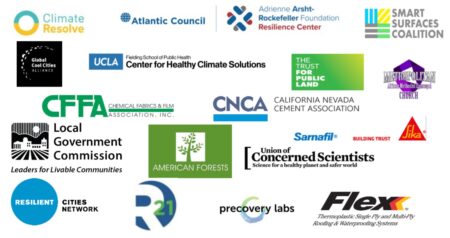A new paper now in press in Energy and Buildings highlights local and state initiatives to advance cool roofs, cool pavements, and urban vegetation in California and beyond.
In particular, the paper reviews efforts that two of California’s largest school districts have undertaken to deploy cool community measures to keep schoolyards cooler and reduce energy bills. The paper also updates how cool community measures are being included as components of local climate action and adaptation plans and of California’s statewide guidelines for extreme heat adaptation.
You can download the full paper through ScienceDirect here.
Abstract
In 2006, California introduced the Global Warming Solutions Act (Assembly Bill 32), which requires the state to reduce greenhouse gas emissions to 1990 levels by 2020. “Cool community” strategies, including cool roofs, cool pavements, cool walls and urban vegetation, have been identified as voluntary measures with potential to reduce statewide emissions. In addition, cool community strategies provide co-benefits for residents of California, such as reduced utility bills, improved air quality and enhanced urban livability. To achieve these savings, Lawrence Berkeley National Laboratory (LBNL) has worked with state and local officials, non-profit organizations, school districts, utilities, and manufacturers for 4 years to advance the science and implementation of cool community strategies. This paper summarizes the accomplishments of this program, as well as recent developments in cool community policy in California and other national and international efforts. We also outline lessons learned from these efforts to characterize successful programs and policies to be replicated in the future.

